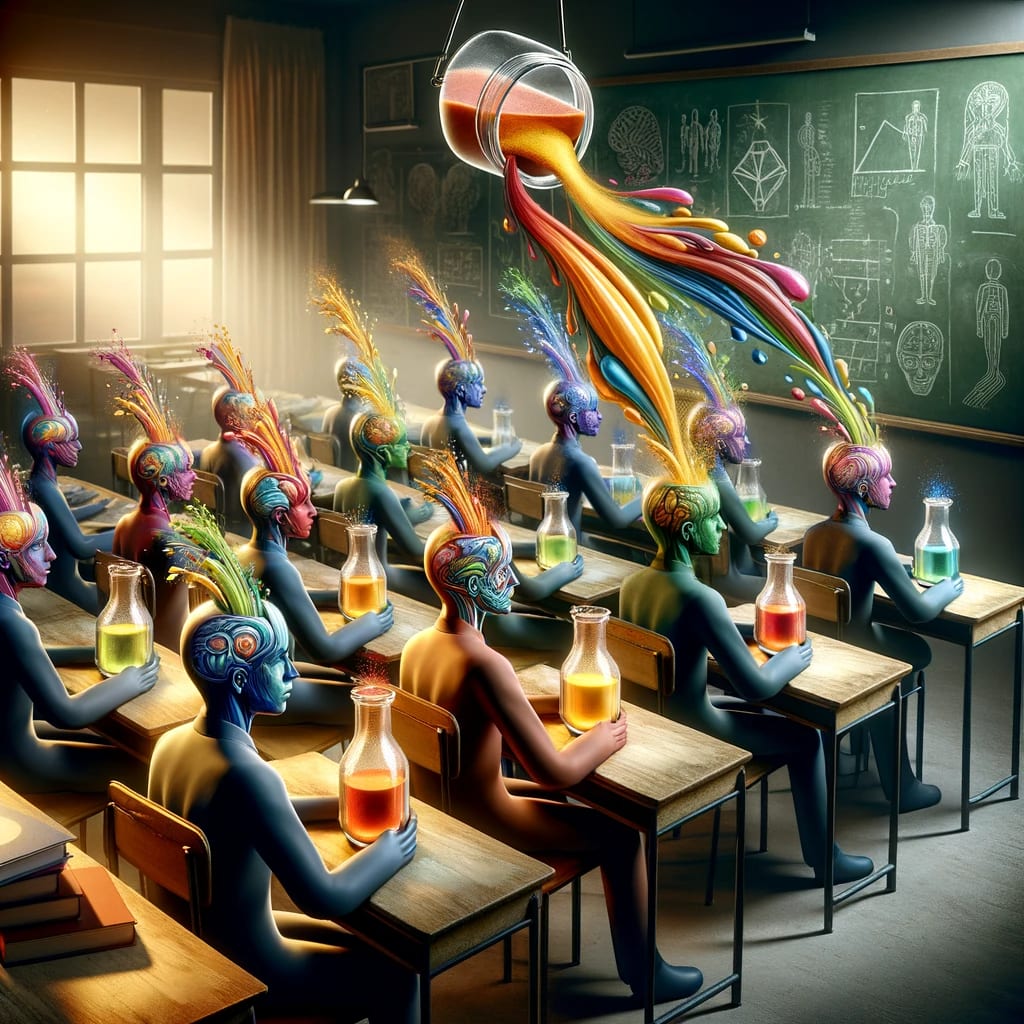Activating Prior Knowledge
Those we teach are not empty buckets.
Planted December 08, 2023
When we create educational materials, it is impossible to write for everyone. As with all types of writing, we must consider our audience. However, in the case of educational materials, we must also consider the prior knowledge of our audience. This is because prior knowledge plays a significant role in learning. It influences how we process new information and how we make sense of it.
If we don’t do this, we can alienate our audience. We can make them feel like they are not smart enough to understand or that they are not welcome.
If we do, we can help pre-qualify our readers, helping them find the answers and information they need.
What is prior knowledge?
For generations, educational models were built around filling up people with the things they would need to know. Whole curricula were designed around the teacher dispensing the knowledge from on high.
Students were seen as empty vessels waiting to be filled.

But, the reality is that every human is constructing their own network of meaning. We bring our past successes and failures, our knowledge about Pokemon and chess, our last break-up and our sore toe. All of these social, emotional, intellectual and physical circumstances are impacting how we hear and interpret the knowledge being presented.

By being aware of and activating this prior knowledge we can help learners care more about what we are teaching.
The current problem
When not thinking about prior knowledge, tutorials can fall into the equally dangerous traps of explaining too little or too much.
The reader has to work out what they need to know and what they can skip over.
This can lead to frustration and demotivation. If there are consistent glaring omissions, it can lead to the perpetuation of knowledge gaps.
Reasons for the Oversight
I don’t think this happens because tutorial creators are evil. There are lots of things that can be at play here.
When we create tutorials on the web, they can be shared in a variety of ways. We don’t always know the audience who are going to interact with out content. In fact, we can’t predict that.
There can be constraints placed on how we build our tutorials, the kinds of examples we use and there might be editorial bias.
Equally, there’s the curse of knowledge at work - the tutorial creator knows what they are explaining. It makes it hard for them to take on the beginners mind and see what’s less obvious.
A Proposed Solution – A New Component
I’m building out a library of educational components. The PreReqs component is one of the first.
For each of these components, I’d like to provide some kind of pedagogical (teaching) reasoning and then share the component.
These are works in progress and the desire is to make them as portable as possible. My aim is to build them as standalone web components that can be imported to any website.
Here’s one in action:
Before we start, do you know:
Awesome! Let's dive in!
and here’s the code that is driving it:
<Precheck intro="Before we start, do you know:" outro="Awesome! Let's dive in!"> <CheckBox>Some basics around technical writing. [This is a great start](https://developers.google.com/tech-writing) if you don't.</CheckBox> <CheckBox>Some knowledge you want to share</CheckBox></Precheck>I find it helpful to have tools like this when I’m creating educational materials. They help remind me about the importance of prior knowledge and help me to activate it.
What’s next?
This is the first of the components that are in my DXDS library found here. I’m going to be building out more of these and sharing them as I go.
The initial implementation is as an Astro component but I’m going to be building out a web component version too.
The aim is to have a growing list of components with a pedagogical rationale for each one. I’m also going to be building out a set of guidelines for how to use them.



